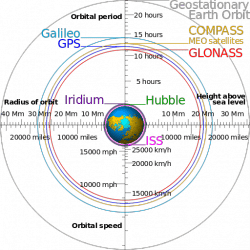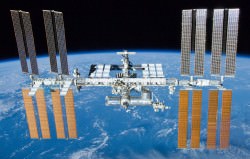The Earth’s atmosphere is a total drag, especially if you’re trying to orbit our planet. So how low can you go?
The Earth’s atmosphere is a total drag, especially if you’re trying to orbit our planet. It’s a drag. Get it? Atmospheric drag. Drag. Drag.
Hi, my name is Fraser Cain. I’m the publisher of Universe Today, and sometimes my team lets me write my own jokes.
I could have started off this episode with a reference to the “Adama Drop” in-atmosphere viper deployment from BSG, but instead I went with a Dad joke. My punishment is drawing attention to it.
So how low can you go? And if you go low enough, will Ludacris appear in the mirror?
We all appreciate the Earth’s atmosphere and everything it does for you. With all the breathing, and the staying warm and the not having horrible bruises all over your body from teeny space rocks pummeling us.
I’ve got an alternative view. The Earth’s atmosphere is your gilded pressurized oxygenated cage, and it’s the one thing keeping you from flying in space.And as we all know, this is your destiny.
Without the atmosphere, you could easily orbit the Earth, a few kilometers over its surface. Traveling around and around the planet like a person sized Moon. Wouldn’t that be great?
Well, it’s not going to happen. As you walk through the atmosphere, you bonk into all the air molecules. You don’t feel it when you’re moving at walking speed, but go faster, like an airplane, and it’ll rock you like a hurricane.
Without constant thrust pushing against the atmosphere, you’ll keep slowing down, and when you’re trying to orbit the planet, it’s a killer. Our atmosphere is like someone is constantly pushing the brakes on the fly in space party.

If you’ve played Kerbal Space Program, you know the faster you’re traveling, the higher you orbit. Conversely, the slower you travel, the lower you orbit. Travel slow enough and you’ll eat it, and by it, I meant as much planet as you can co-exist with after a high speed impact.
Being more massive means more momentum to push against the atmospheric drag. But with a large surface area, it acts like a parachute, slowing you down.
Hey, I know something that’s super massive with a huge surface area. The International Space Station orbits the planet at an altitude between 330 km and 435 km.
Why such a big range? The atmosphere is constantly pushing against the ISS as it orbits the planet. This slows down the space station’s speed and lowers its orbit. It wouldn’t last more than a couple of years if it wasn’t able to counteract the atmospheric drag.

Fortunately, the station has rockets to increase its speed, and a faster speed means a higher orbit. It can even get assistance from docked spacecraft. If the space station were to go any lower, it would require higher and higher amounts of thrust to prevent re-entry into the Earth’s atmosphere.
So what are the limits? Anything below 160 km altitude will essentially re-enter almost immediately, as it’s buffeted by the thicker atmosphere. You really wouldn’t last more than a few hours at that altitude, but above 800 km you could orbit for more than 100 years.
Geosynchronous satellites that orbit the Earth and transmit our television signals are at an altitude of about 42,000 km. Satellites that high are never coming back down. Well, maybe not never.
Want to enjoy your orbital experience? Make sure you get yourself to an altitude of at least 300 km, 400 km just to be safe. You should shoot for more like 800 km if you just don’t want to worry about things for a while.
Knowing these risks, would you be willing to travel to orbit with current technology? Tell us in the comments below.

